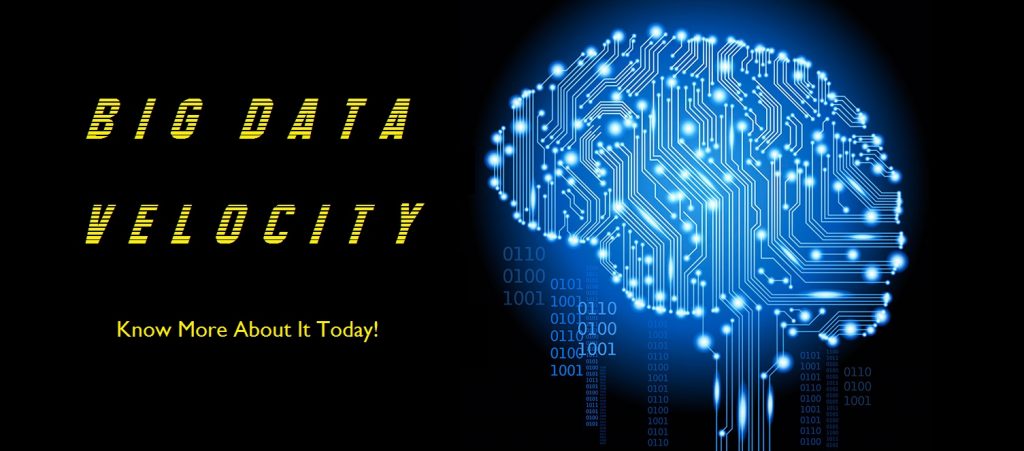One of the major events of the last few years is the advent of Big Data and its profound impact on the way decision are made, strategies are devised, and actions are executed. In a very short span of time, Big Data insights have made an enormous amount of impact on the way things are done at many businesses, and the superior business intelligence that can be amassed from Big Data has helped many companies break free from the shackles of insight limitation and transcend to a level beyond comprehension or competition.
There is still a lot of potential to be unraveled from Big Data, as much of this frontier is unknown and yet to be discovered. Very little of its potential has yet been tapped, and companies are forever in the search of new avenues and pathways in which Big Data can be leveraged to promote business interests, streamline business processes and get on-time, valuable, actionable insight.
One of the areas of Big Data that has remained significantly untapped across the last few years is the concept of high velocity data. Data velocity is a significant variable within the realm of Big Data, and somehow companies are yet to fully delve into this thriving, lively sphere of possibilities. While companies that work routinely with Big Data have mostly concerned themselves with particular aspects of the concept like the large volumes of data available, or the multiple, diverse varieties of data that can be collected, the velocity at which the data is being generated has so far not been an area which has been worked on extensively.
High data velocity in the Big Data ecosystem is an interesting concept worth knowing and exploring – it can inform companies on the influential factors regarding real-time conversations and interactions on the internet, thereby providing valuable insight on customers’ demand and their opinions. It can also be used as a proactive alert system, so that companies can receive advance awareness of problems, issues and malfunctions in the near future and act upon them for a timely resolution. These aspects of processing and analyzing data in real time and delving deep in high data velocity is something that can be of use to companies across multiple industries.
A Look at the Past
In the past as well as at present, large scale enterprises have invested quite a bit of their working capital in endeavors involving Big Data. Since the concept and its uses are still in a phase of relative infancy, a bulk of this investment constituting almost half of the total, has gone towards bringing about improvement in the processes relating to Big Data processing, storage and analysis. There has been significant investment within the context of data volume and data diversity, and also some into streamlining processes for efficiency and cost-cutting. According to statistics, a meagre 3% of Big Data investments last year had to do with high velocity or real-time data.
Taking a look at different aspects of Big Data and the prognosis attached to them in the coming few years, there might need to be a change in this trend born out of obligation, not choice. With the accelerated rate of Big Data proliferation, forecasts suggest that over the next few years, the part of Big Data that is likely to increase exponentially in amount is data generated from sensors and smart devices – in other words, high velocity data. As the number of sensor-based intelligent devices with internet connections keeps growing daily, the amount of high velocity data is soon to become humongous.
Fast Facts about “Fast Data”
High velocity data coming from sensors or smart devices is unlike the rest of Big Data elements. Instead of being historical data it is live data. It is auto-generated, interactive information about events taking place in real time and taking place quickly. While companies can use historical data to gain insight for future endeavors, high velocity data can be used for immediate response and decision-making. To take instant action and react to change within seconds, it is extremely important to make Big Data fast and take into account the nuances involved.
While not a new concept entirely, high velocity data remains a facet of Big Data that has seen limited use in particular fields only. At present however, the scenario is set to change. Driven by the explosion of Big Data, industries and companies have started to face more situations where there is need for instantaneous decision-making. In fact, in the case of certain industry areas like social media and forward-thinking public services, the ability to make decisions and adapt to change instantly is what might govern market differentiation in future. Companies need to receive data, process data and make decisions based on data, all in real time.
The applications of high velocity data usage in the limited scope of understanding that has been achieved till date still includes many fields and possibilities. A few of the ideal uses of fast data can be –
– Network usage and monitoring systems that adapt and respond instantaneously based on real-time analysis of traffic patterns
– Tailor-made customer experience management systems that have the ability to understand and analyze large amounts of customer behavior data in real time so as to create better self-service opportunities and more streamlined customer interactions
– First responder systems and related processes that rely solely on the instant processing of data available in real time
From these possibilities, we can be sure that high data velocity is something that businesses will have to include in their scheme of things sooner rather than later. Taking into consideration the amount of Big Data insights and the eternal need of making sense of Big Data of the high velocity variety can potentially allow organizations to become more competitive, adaptable, and nimble with their operations.
What you can do to Make Big Data Fast
For those companies that want to leverage this potential-filled avenue of high velocity data, there can be certain very palpable competitive advantages. Let us take a look at some possible ones –
– Increasing Customer Engagement through Real-time Decision-making :
One of the likely fruitful uses of high velocity data in future could be through its analysis to provide a more engaging customer experience. Companies can monitor customer behavior and decisions in real time, getting to see and identify patterns, triggers and threshold areas. This enables them to deploy marketing and promotional efforts in real time, during the time-critical stage of the decision-making process where the right amount of intervention might make a difference.
For example, retail companies have for a long time wanted to engage in customer interaction in real time, but have been hampered by the more traditional systems like batch processing which are very much a part of their modus operandi. With high velocity data processing, they will be able to address real market situations better. Companies can now report to customers the moment when a product they need comes into stock, and can also help insight gained from the analysis of this data to fill out high priority gaps in inventory. In a system where customer data and inventory data can be juxtaposed with real-time behavioral and streaming data, the chance of success rises dramatically.
– Creating more personalized interactions with machine-generated Data :
Projections indicate that Big Data is set for a new round of evolution over the coming few years, with more data being generated by machines than by actual people. This throws a challenge in front of companies that are currently working with Big Data. The challenge is to find ways to process and analyze multiple flows of concurrently occurring data.
Although in the early stages of development and adoption, data processing systems of the next generations hope to answer this challenge with the ability to work with fast, real-time data. Combining and integrating machine-generated fast data with other, more traditional forms of data can give companies the ability to further streamline and personalize their customer interactions. For example, telecom companies can use user data and device data as and when they are generated by processing it in real time and using it to develop real-time visibility and insight into their overall system performance. This can enable them to identify performance issues, rectify them in real time and provide customized, tailored services to customers in keeping with real-time need.
The Way Forward
With so much having been already discovered about Big Data and so many new doors opening on a daily basis, high data velocity is something that is bound to weigh heavily on the radar of major enterprises in the near future. To improve operational capabilities, strengthen customer service and to stay on top of issues and problems, companies will need to take into account the insights provided by fast data. They can then use that insight to improve and enhance their offerings.
Companies that take a conscious and cohesive effort in this matter can be considered far more likely to stay in business longer and become more successful than their competitors. With further development in the use of data in real time and better integration into existing business infrastructure, time is on the side of big data velocity.






















